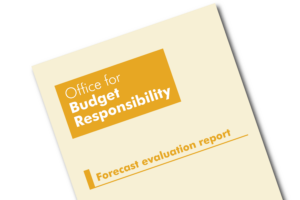Post-pandemic supply bottlenecks, the subsequent energy crisis sparked by Russia’s invasion of Ukraine, and the fiscal and monetary policy response to both drove significant differences between our forecasts and outturn for financial year 2022-23. Inflation proved stronger and more persistent than expected in our pre-invasion March 2021 and March 2022 forecasts published in the immediate aftermath of the invasion. While higher nominal GDP led to higher nominal tax receipts than expected, higher inflation, interest rates, and the fiscal policy response to the cost-of-living squeeze pushed up spending by even more, meaning borrowing came in above our forecast in both years.

